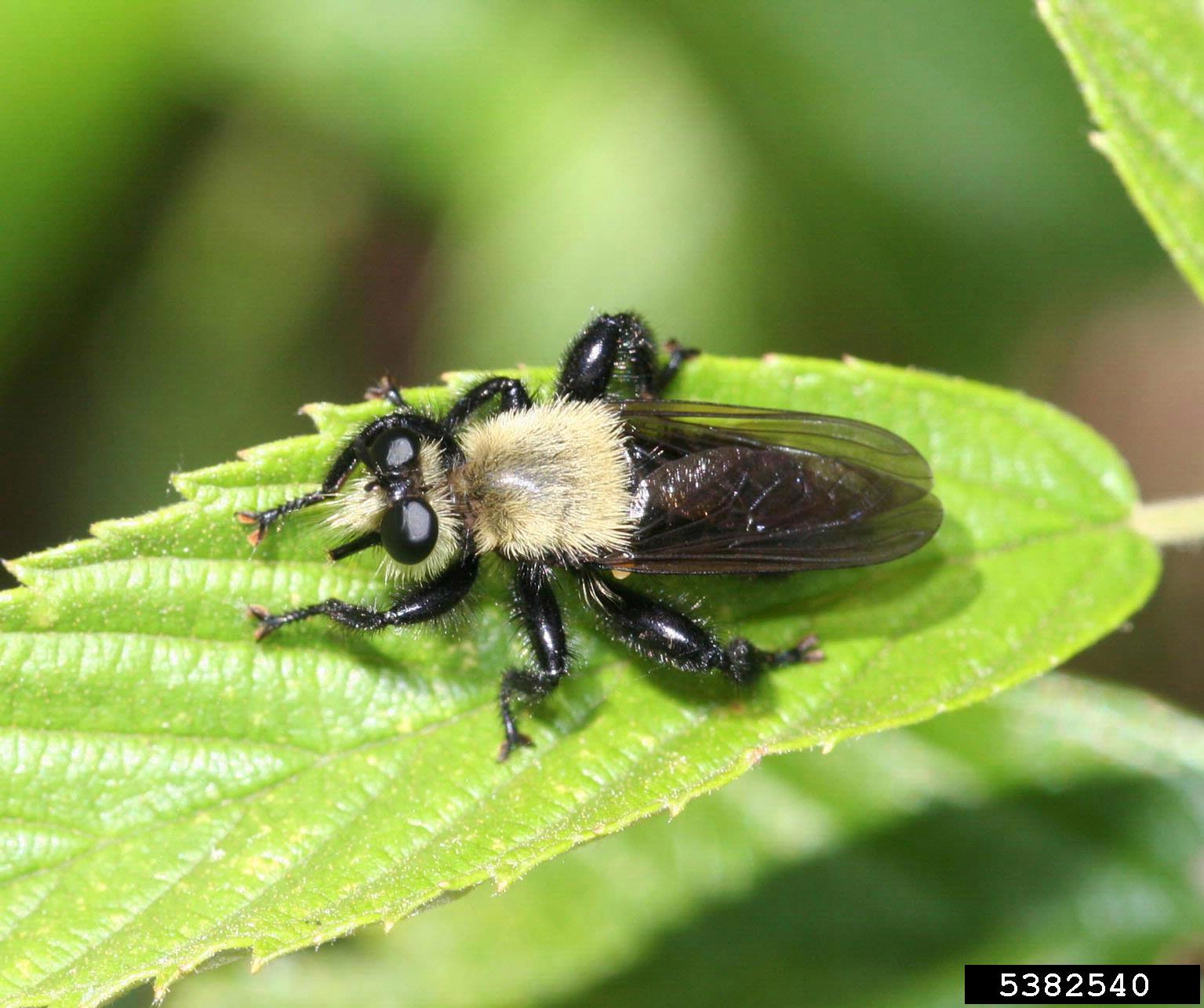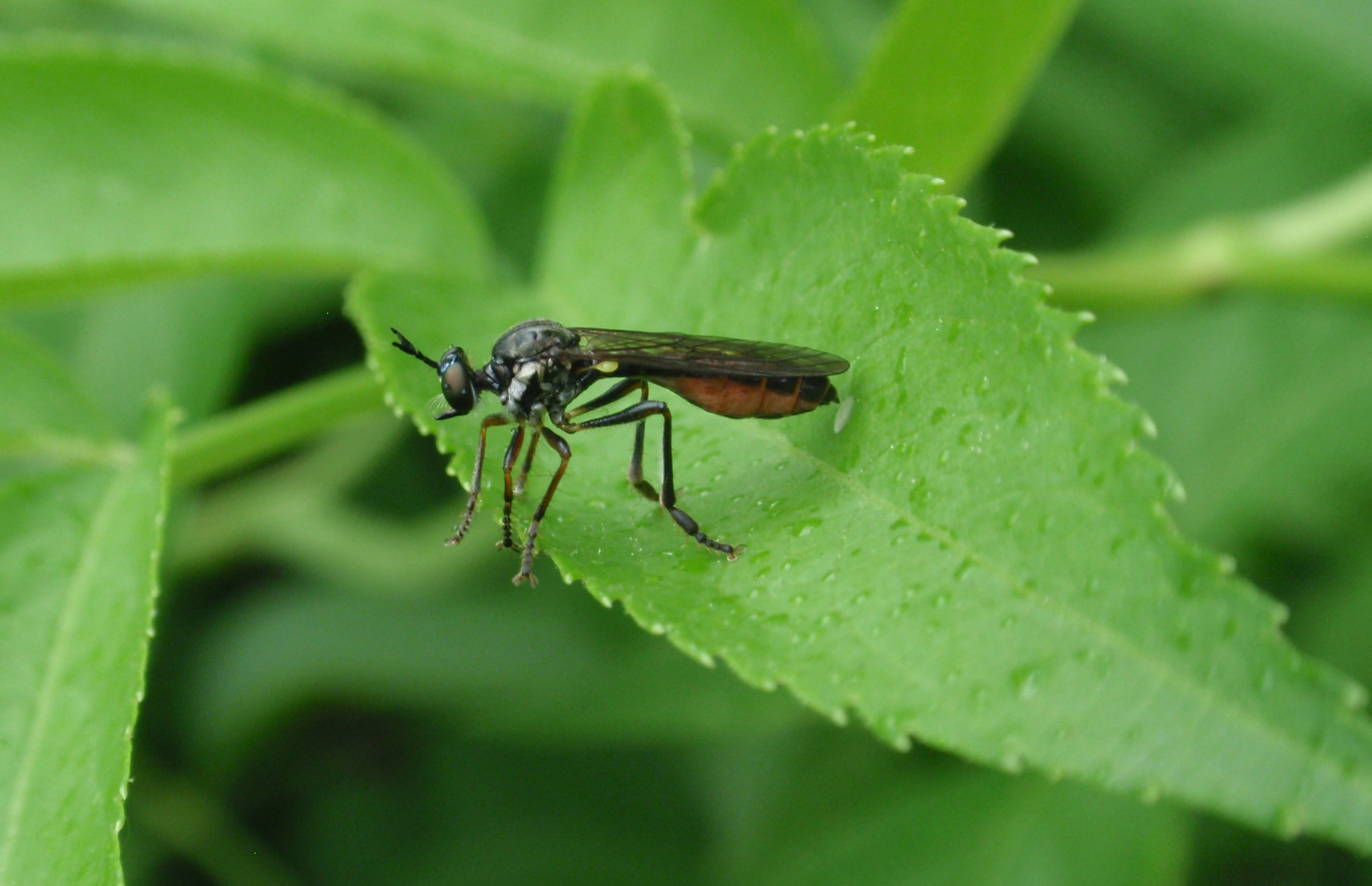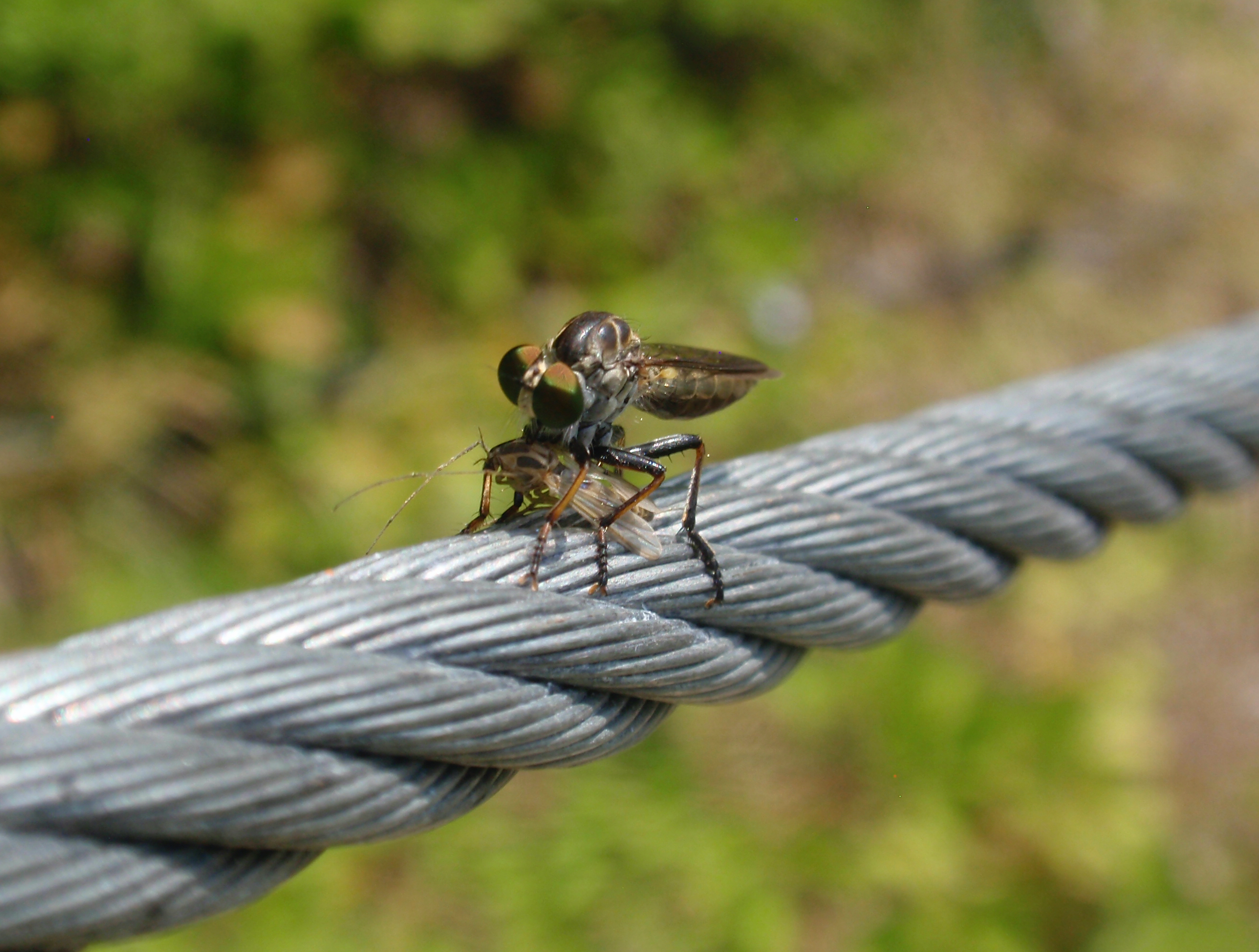Michigan insects in the garden – Season 2 Week 7: Robber flies
If you’re not careful, these predatory flies might just steal your heart.

Robber flies (insect order Diptera, family Asilidae) are among the insect world’s most impressive flying predators. Also known as assassin flies, perhaps because of their habit of waylaying innocent passersby, you can find robber flies resting on a leaf or another surface waiting for a potential prey insect to fly past. When a suitable victim passes, they launch into the air and catch their prey on the wing, piercing through the exoskeleton at a weak point, between body segments, for example (Photo 1). They inject a venom that incapacitates the prey so they can carry it back to their resting place and consume the victim in peace.
You can tell robber flies from other flies by the presence of a characteristic “beard” of bristly hairs between their eyes and just above their beak-like mouthpart (Photo 1). They are also a little bit humpbacked in appearance and characteristically hold their single pair of transparent wings over their backs when not flying.
There are nearly 1,000 species of robber flies in North America, and they come in a variety of colors and sizes. Some fairly common robber flies in Michigan (Laphria spp.) are fuzzy mimics of bumble bees (Photo 2). Other robber flies have very little body hair (Photo 3). One characteristic that all robber flies share is their large compound eyes and excellent vision.

A life of crime
Robber flies are predators as immatures (larvae) and adults. Less is known about the immature phase because they live in hard-to-reach places, like soil or decaying logs. From what is known, it seems that robber fly larvae consume a variety of prey, including grasshopper eggs and root-feeding insect larvae. Some species have been studied because of their potential for control of beetle grubs in golf courses and residential lawns. The larvae hatch from eggs laid on foliage (Photo 2), in the soil or scattered about while in flight. The maggot-like larvae pupate near the soil’s surface as they make the transition to adulthood.

Inviting trouble
The impact of robber flies on pest insect populations has not been well quantified. Certain species are known to prey specifically on beneficial insects such as honey bees (Apis mellifera) and tiger beetles (Cincindelinae, Photo 1). However, they have also been documented feeding on a variety of economically important pest insects, including white grubs, Colorado potato beetle (Leptinotarsa decemlineata), black flies, fruit flies (Drosophila sp.) and mosquitos (Photo 4).

If you’d like to invite robber flies to your garden, provide plenty of flowering plants. The adults are often seen on flowers where they drink the nectar to supplement their otherwise carnivorous diet. The Gardening in Michigan website from Michigan State University Extension is a great place to find tips on bringing more flowering plants into your landscape.



 Print
Print Email
Email









